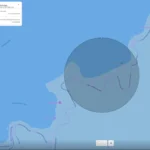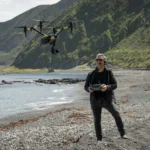First things first, learn how to drive your drone and understand the rules…
Check out the Civil Aviation Authority key rules here.
Start in wide spaces, avoid crowds and tall objects. They’re an expensive investment!
Have a pre-flight check list
There are many things to consider pre-flight. Make sure your batteries are fully charged, have extra batteries and parts on hand, check your filming and streaming equipment is communicating properly and ensure your propellers are working correctly. Take our DRONE 101 training course online – it covers everything you need to know to get off to a flying start.
Rehearse your flight and shoot
Practice makes perfect. Think about your shot, even a professional will need to take numerous shots so practice, practice, practice.
Invest in a gimbal
It will stop your video from wobbling around. A gimbal is a pivoted support that allows your video to rotate on a single axis.
Avoid wind, rain and the sun
The best time to fly is when wind speeds are at 7-9 knots (8-10 mph). Anything greater than 15-20 knots (17-23 mph) is a no go. Don’t shoot into the sun because your propellers can cast shadows and highlight dust on your lens.
Look into a first-person-view (FPV) system
This allows you to experience what your camera is seeing live on the ground. Making it easier to capture the perfect shot. You will need a ‘spotter’ to keep an eye on your drone at all times.
Try mastering bird’s-eye, side-slide and fly-through
A bird’s-eye view is the easiest move and can be achieved by hovering in one place or moving slowly over an area. Side-slide (also known as strafe) is when you make sideways movements and it shows landscapes from different perspectives. Fly-through is for the pros and it requires a FPV system. You’ll be piloting your drone through a gap – make sure you study the gap before flying through it.
Orbits
This is where you lock your video to a subject. It’s a technical move and you’ll need to make a lot of tiny adjustments, maintain a constant yaw rate, distance and speed from your subject.
Camera settings
Use a flat image profile, this will stop the sky and clouds from puffing out and helps maintain detail in the dark areas. Lower your shutter speed to avoid the strobing affect, especially if you are filming close to the ground.







